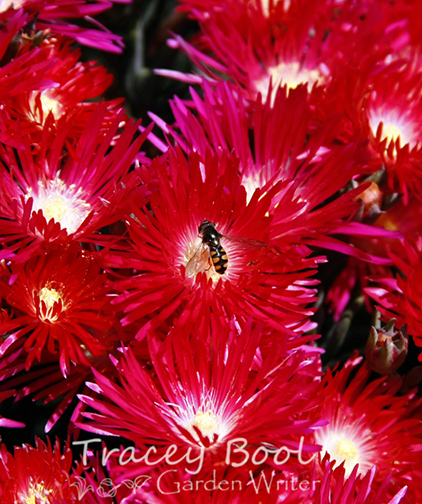|
Bringing in the Good Bugs
(20 June 2013) As with weeds, the term ‘pest’ is a point of view – what is troublesome for one isn’t necessarily the case for another. Earwigs, for instance, are an interminable source of frustration to the grower of ornamental flowers but saviour to apple growers and their battle to eradicate codling moth larvae. Pests become prolific when a lack of biodiversity is evident, consequently tipping the delicate balance and health of vulnerable plants into chaos. As gardeners, we can encourage biodiversity through astute observation of what’s around us and replicating these ecosystems in our back yards. Nature embraces vigour and stamps out the weak so the healthier your plants and garden ecosystems, the greater its resistance to adversity. In fact, healthy plants and soils are less attractive to pests and diseases than their weaker counterparts. Through plant diversity and natural pest management, we welcome wildlife and beneficial insects, bugs and creepy crawlies into our gardens, eliminating the need to employ nasty chemicals. Yes, spiders are our friends, and the sooner we see them as such, the better. They are one of the most significant beneficial predators in the world and of invaluable use in the garden. I can regularly be seen playing quite the game of limbo in my yard avoiding my heroic friends, and must look quite the spectacle ducking and weaving to an invisible tune no one else is privy to. In saying that though, I draw the line at them dancing above my head when I am reading in bed at night - despite the unquestionable strength of their webbing and belaying prowess, I do have an irrational fear of one dropping onto my face when the lights go off. Biological controls are often considered as a last resort in pest management when all traditional methods have failed. Ideally though, they should be the first. Pesticides don’t discriminate - they wipe out everything in their path whether good, bad or otherwise. Even organic sprays such as pyrethrum can be harmful to beneficial predators (including the humble lady beetle) so avoid using sprays unless strictly necessary. And do your research first to minimise potential impact on our little friends. Timing is crucial when managing pest problems. Through regular observation, which I like to call ‘pottering’ and ‘living the dream’, we can avoid any potential imbalances before they become an issue. It’s about maintaining balance and not total obliteration – we want to keep a few nasties for the good bugs to eat! Ensure you provide reliable year-round source of nectar to entice beneficial critters into your garden. Self-seeding annuals and perennials such as alyssum, cosmos, coriander, dill, red clover, carrots and lucerne are particularly attractive to insects, bugs and everything in between. Coverage of up to 5 percent of your garden space is usually enough to get good results. Planting crops along fence boundaries and in areas less frequented is ideal, as you can leave the plants to self-seed and naturalise. Green Harvest has a range of seeds available which are attractive to beneficial insects including their Good Bug Mix. See www.greenharvest.com.au |

